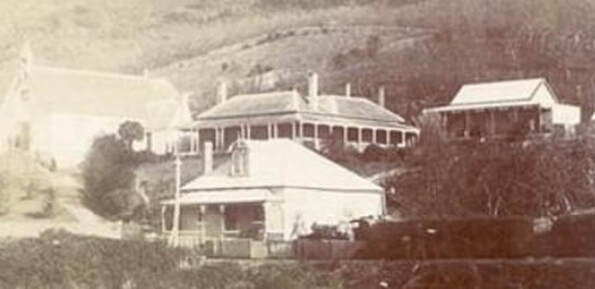Lighting in Franklin by Carol Cane
This article was inspired by an article on ‘Street Lighting’ provided by Father Hennessy in the Huon Times in March 1913.
Franklin’s image as a progressive town was being limited because it had no street lighting, as had many other towns in the state; Lovett (Cygnet) was already undergoing a ’30 day trial’.
Councillors of the Franklin Ward were taken to task by Father Hennessy, (Huon Times 15th March 1913).
He was extremely concerned over the ‘…lack of information…’ available to the residents so he did his own research. His source was probably Mr. Todd, to whom he later expressed his appreciation for pamphlets on the various forms of lighting.
Franklin’s image as a progressive town was being limited because it had no street lighting, as had many other towns in the state; Lovett (Cygnet) was already undergoing a ’30 day trial’.
Councillors of the Franklin Ward were taken to task by Father Hennessy, (Huon Times 15th March 1913).
He was extremely concerned over the ‘…lack of information…’ available to the residents so he did his own research. His source was probably Mr. Todd, to whom he later expressed his appreciation for pamphlets on the various forms of lighting.
Father Hennessy explained clearly three types of ‘lighting’.
1: Individual Lighting. This means a separate light on each pole. Unfortunately, the costs of cleaning and re-filling with either kerosene, methylated spirits, petrol or carbide, as well as the associated labour costs, would be ‘out of proportion to the satisfactory service given’.
2: Petrol-Vapour (Air-Gas). The capital costs are expensive because this system requires plant and large piping for the gas. Costs are variable and humidity affects the quality of the vapour. The lights are easily extinguished and damaged in windy weather.
3: Acetylene. This system was recommended for small towns where ‘…water-power for generating electricity was not obtainable…’. It did not require a heavy capital outlay; was ‘low maintenance’ (between 1 and 3 months for recharging carbide which was dependant on the size of the generator); used smaller pipes (than ‘2’ above) which could be laid underground. This system could also be used for house- lighting which with a gas meter fitted, would be a source of revenue. There was also the bonus of allowing cooking stoves, boiling rings
and bath heaters.
1: Individual Lighting. This means a separate light on each pole. Unfortunately, the costs of cleaning and re-filling with either kerosene, methylated spirits, petrol or carbide, as well as the associated labour costs, would be ‘out of proportion to the satisfactory service given’.
2: Petrol-Vapour (Air-Gas). The capital costs are expensive because this system requires plant and large piping for the gas. Costs are variable and humidity affects the quality of the vapour. The lights are easily extinguished and damaged in windy weather.
3: Acetylene. This system was recommended for small towns where ‘…water-power for generating electricity was not obtainable…’. It did not require a heavy capital outlay; was ‘low maintenance’ (between 1 and 3 months for recharging carbide which was dependant on the size of the generator); used smaller pipes (than ‘2’ above) which could be laid underground. This system could also be used for house- lighting which with a gas meter fitted, would be a source of revenue. There was also the bonus of allowing cooking stoves, boiling rings
and bath heaters.
4: Electric Light. The best system recommended. Options were, generation by boiler and steam engines, suction gas, or petrol or kerosene engines. The costs were considered ‘…almost prohibitive for a small town…’ because the services of an electrician were required or, with water power, an engineer.
It appears that Father Hennessy, after sharing this information with the people of Franklin via the press, then installed an acetylene gas system in ‘his house’.
It appears that Father Hennessy, after sharing this information with the people of Franklin via the press, then installed an acetylene gas system in ‘his house’.
The priest’s house must have looked magnificent with the acetylene light system installed.
Photo H. H. Baily.
© Carol Cane, 2020.
[article originally published in February 2020 FHG newsletter]
Photo H. H. Baily.
© Carol Cane, 2020.
[article originally published in February 2020 FHG newsletter]
